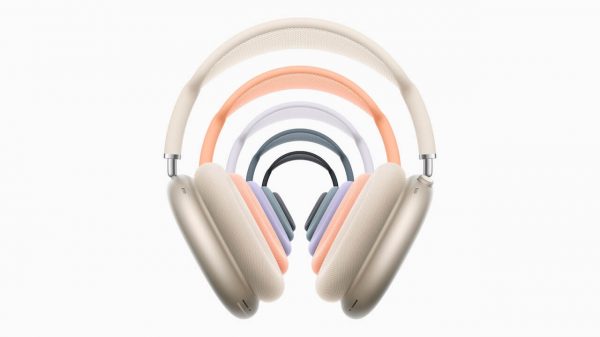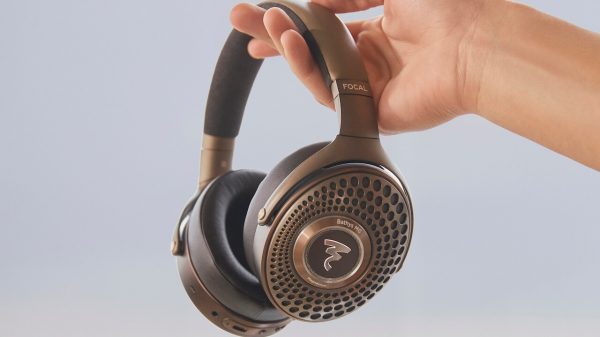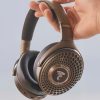With the wireless headphone and earbuds markets projected to grow to over $46 billion over the next seven years in North America, there is an enormous amount of money at stake for the key players in the category. Apple controls over 20% of the market as this point and whilst Sony, Bose, Philips, Samsung, Beats, Sennheiser, and others have made a rather strong push to earn a healthy slice of the pie, there is actually very little left over for the high-end players.
$400 has become the ceiling for most people (99%) shopping for wireless headphones and whilst it is great to see the main players improving the quality of their flagship models, all of that progress has come with higher prices between $350 and $400.
But what about consumers who don’t want to spend more than $200 because they don’t see the value in it or because sound quality is not the most important feature to them?
Not everyone sees the value in a pair of Bowers & Wilkins Px7 S2e or even the Apple AirPods Max.
Sennheiser’s Accentum ANC Wireless Headphones are designed for that type of consumer at $179.
But just how much does one lose stepping down from their more expensive options?
Let’s take a listen.

First Impressions
Straight out of the box, there are a few obvious differences between the Accentum and the Sennheiser Momentum 4 Wireless Headphones.
The headphones ship without a travel case and 3.5mm auxiliary cable which feels somewhat odd at $179; Sennheiser does provide a USB Type-C to USB Type-A cable for charging which works with both Android and Apple iPhone.
The headphones feature a lightweight polymer build that is noticeably lighter than the Momentum 4; the Accentum are 222 grams compared to the 297 grams of their more expensive wireless sibling.
One advantage of the lighter design is that the Accentum were easier to use on longer flights and whilst commuting; the earpads proved to be rather comfortable during longer listening sessions.

Design
Sennheiser has moved away from logos or company branding on their wireless lineup and with the exception of a small “S” logo on the headband where it meets the gimbals.
The headband is a simple spring type with foam padding on the underside and a leatherette finish on the top side.

Comfort
The ear cups can swivel 180° on the vertical axis, allowing them to lie flat if worn around the neck. On the horizontal axis, the top will tilt roughly 35° inward and 10° outward making the Accentum, a rather comfortable wear even with glasses.
They are also smaller than the ear cups on the Momentum 4 and did touch my ear in a couple places, so those with large ears may find them a bit more crowded.
The listening experience, however, proved that one is unlikely to notice the touch points due to the design of the pads and decrease in weight. I was hard pressed to find any pressure points while listening which is a great design feature for those who will be listening at a desk or whilst sitting in an uncomfortable seat on an airplane.

Features
The physical controls are provided by a series of buttons on the right cup or via the Smart Control app with some controls only available in the app.
All of the controls are on the right cup starting with the USB Type-C port located on the bottom followed by the power button and then the volume down, play/pause/answer, and then volume up.
The power button also puts the headphones into pairing mode if pressed and held.
The headphones are perfectly usable without an app, but used with the Smart Control app on your phone or tablet provides access to an equalizer, sound check sound personalization, ANC controls, and sidetone controls.

Firmware updates are also handled via the app so even if not used daily, periodically connecting to see what updates are available is advisable.
The app also supports sound zones that can save different presets for EQ and ANC, which may come in handy in different environments.
So when at home, it can automatically enable transparency mode and a neutral profile, and when at work ANC can be enabled with a bit more bass cut.
Internally, the Accentum uses a 37mm dynamic driver and a Bluetooth 5.2 chipset.
Codec support is rather good with the Accentum working well with SBC, AAC, aptX, and aptX HD.
Wireless headphones priced below $200 often suffer from drop-out issues once you put a lot of distance between your smartphone and the headphones; the Accentum proved to be rather stable up to 30 feet if light of sight is maintained.
Even putting an interior wall between my smartphone and the headphones did not cause me to lose the signal; once I moved into the next room (2 interior walls) the drop-out issue began to surface. Few consumers actually do that so it’s not real knock against the headphones.
What really surprised me was the battery performance. Sony and Apple will not like this one.
Sennheiser’s claim of 50 hours from a full charge proved to be accurate over 2 weeks of testing. When ANC was engaged, the results remained the same which is rather incredible performance at the price point.

Sound Notes
There is a boost in the sub-bass that is undeniable when listening to the Accentum; those who prefer a stronger bottom end will like that right away if their music selections highlight that range of the sound.
The ‘neutral’ default EQ setting does not accurately describe the sonic signature which is a strong “V” shape overall.
What saves the bass range from becoming too overwhelming is the better defined texture in the mid and upper bass ranges.
More affordable wireless headphones often focus on this range because the headphones have been tuned for popular genres of music and that is certainly true of the Accentum.
In rather stark contrast, the midrange comes across as somewhat recessed sounding; the lower midrange benefits from the tonal balance and presentation of the upper bass which bleeds over somewhat, giving male vocals necessary heft and texture.
But as we move out of the lower midrange, the midrange takes a step back and thins out. Clarity is average but instruments lose some of the necessary texture and note weight that makes them sound realistic.

Guitar has good rasp but can lack a bit of weight in the upper registers. Likewise, violins come across as a bit thinner than natural. There is a push in the upper midrange that brings female vocals forward at least a step from the instrumentation.
The real issue is the missing detail and texture in the heart of the midrange compared to the detail and texture on either side.
With its boosted mid bass and upper midrange/lower treble push, listeners may find the Accentum rather pleasing for pop and rock but less suited for classical and jazz recordings.
There is a definite lift in the lower treble that gives the Accentum a balance between the bass emphasis and the lower treble, which can make it sound a touch bright at times.
Percussion snap is good, but cymbals can have a slightly metallic tone. The good news is while the lower treble brings some energy and air, it avoids getting harsh; which explains why I was able to listen for extended listening sessions without any sense of fatigue.
The tuning, especially the aforementioned upper midrange/lower treble, does allow the Accentum to sound more spacious in the depth and height departments with spatial cues that were easy to identify.
Instrument separation is better at either extreme, whilst the hole in the midrange takes a toll on the clarity. Imaging performance is also dependent on the specific frequency ranges; which ranged from good to average overall.
The ANC proved to be effective at removing low droning noises but struggled at the higher frequencies. It performed well at blocking out distant background noise or low engine or rail noises, but won’t completely eliminate a crying baby seated two rows behind you on the airplane or at your local coffee shop.
Transparency mode allowed voices to be heard along with outside noise, and it was certainly impacted by the wind when walking on the street.

Final Thoughts
The Sennheiser Accentum is a budget ANC wireless headphone that is clearly tuned for a very different listener than the Momentum 4; the more expensive Sennheiser model delivers a more balanced presentation with a lot more detail and superior ANC performance.
When you factor in decent noise cancellation, excellent battery performance, a comfortable fit, above average build quality, and a rather lightweight design, the $179 headphones start to look like a solid deal.
The Accentum might not be my ideal pair of wireless headphones for the genres of music that I enjoy, but other listeners will likely find their sonic virtues to be what they are looking for a great price.
- Where to buy (Accentum):
$179$149 at Amazon
- Upgrade option (Momentum 4):
$379$279 at Amazon
2024 Prime Day Sale Update: For Amazon Prime Day, an ACCENTUM Wireless SE (Special Edition) Bundle with USB-A/USB-C Adapter enabling aptX Adaptive is being offered for $124.95 at Amazon.
Related Reading




































